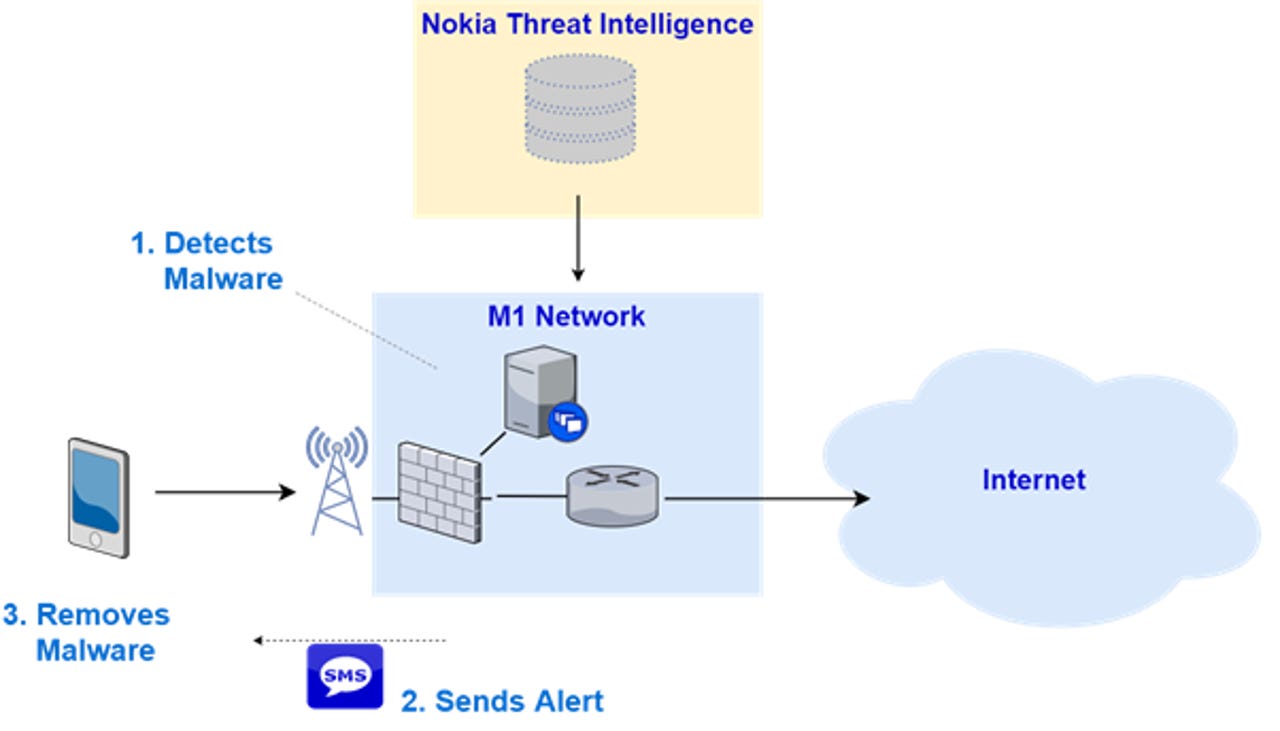M1 launches Mobile Guard malware detection tool for smartphones


How M1 Mobile Guard works
Singaporean telecommunications carrier M1 has launched a network-based malware detection solution for smartphones, using Nokia's NetGuard Endpoint Security platform to power its new Mobile Guard offering.
According to the company, the solution is the first of its type in the region.
Nokia's NetGuard Endpoint Security network-based anti-malware solution works by checking devices accessing M1's mobile network for signs that it may be infected by malware.
Once Mobile Guard determines that a customer's device has been compromised, it will trigger an SMS and email alert to the customer, the company explained. The SMS or email will tell the affected customer what the malware is, the impact it may have, and how to rectify the situation.
The customer can then use the "bundled anti-malware solution" -- which is a Trend Micro Mobile Security app -- to scan their device and remove the malware. Customers who have not downloaded the app will get a download link and licence key for it.
"M1's Mobile Guard is the only solution in our market to offer always-on, end-to-end network-driven malware protection -- helping customers perform a device health assessment, detecting and alerting customers to a threat, and helping them eliminate any threat found," M1 CIO Alex Tan said in a statement.
Customers can sign up to Mobile Guard for SG$2 per month starting from Tuesday, and M1 said it is currently working with its handset partners to bundle Mobile Guard.
A recent report from Nokia found that smartphone infections grew 400 percent in 2016.
The report was compiled using data from mobile networks that have deployed Nokia's NetGuard Endpoint Security, with the company reporting the monthly rate of infections in mobile networks peaked at 1.35 percent in October 2016, and averaged 1.08 percent in the second half of 2016.
It also measured monthly infections on smartphones and said the average rate was 0.9 percent in the second half, up 83 percent from 0.49 percent in the first half.
"There has been a significant increase in the frequency and intensity of malware attacks over the last few years," Nicolas Bouverot, head of Asia South at Nokia, said on Monday.
Nokia's data included around 100 million devices across Europe, North America, Asia Pacific, and the Middle East. It said that 81 percent of infections were on Android devices, 15 percent on Windows devices, and 4 percent on iPhones and other mobile devices.
During its financial results for the first quarter of calendar 2017, M1 reported a net profit of SG$36.3 million, down 14.6 percent year on year from SG$42.5 million, on operating revenue of SG$260.7 million, up by just 1.2 percent from SG$257.6 million.
M1 holds almost a quarter of the mobile market in Singapore, and its mobile customer base increased by 27,000 during the quarter to a total of 1.27 million post-paid customers and 775,000 prepaid customers.